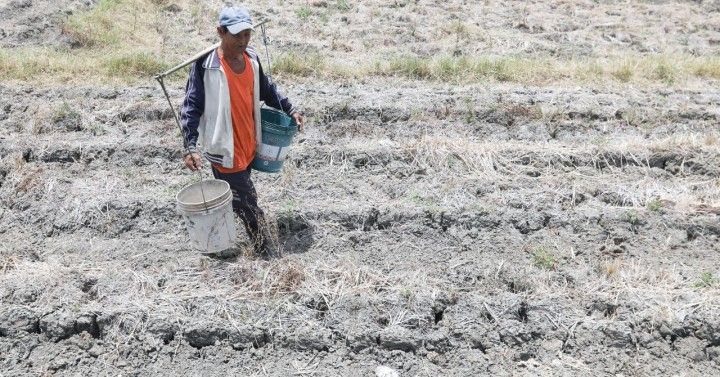The Bangko Sentral ng Pilipinas (BSP) is now worried that the expected lower farm output from, a stronger-than-expected El Niño phenomenon would push up inflation.
El Niño has already destroyed crops in some parts of the country, but the Bangko Sentral ng Pilipinas (BSP) said in its Monetary Policy Report that the latest forecasts from the weather bureau point to a low probability of a severe dry spell, Business Mirror reported.
“The risk scenario assumes the strong El Niño to persist until the second quarter of 2024, further increasing rice prices due to lower rice production until the end of the year,” BSP said. “The probability is assigned to this risk based on the latest climate outlook from PAGASA [Philippine Atmospheric, Geophysical and Astronomical Services Administration].”
The central bank said the probability of inflation breaching the high-end of the target range is 51.4 percent for 2024 and 37.1 percent for 2025.
Its baseline scenario for inflation considered strong El Niño conditions until February 2024. This is expected to ease in the second quarter 2024, the same report noted.
Consumer goods
Of the 315 total Consumer Price Index (CPI) items, the number of items with inflation rates above the threshold of 4 percent fell to 118 in January 2024 from 140 items in December 2023.
These 118 items, the report stated, accounted for around 40.8 percent of the total CPI weight in January.
However, it was lower than the 44.8-percent share in the previous month.
The number of CPI items below target increased to 112 items in January 2024 from 94 items in December 2023. These 112 items accounted for 25.3 percent of the total CPI weight, higher than the 20.3 percent in the previous month.
The remaining 85 CPI items in January 2024 which accounted for 33.8 percent of the total CPI weight were within threshold.
“The effective implementation of government measures to combat the impact of El Niño could lower inflation,” the BSP reported.
These measures include improving and concreting irrigation canals, distribution of pumps and engine sets, and the construction of solar powered irrigation systems.
The government has also established greenhouses, provided planting materials and farm supplies, various support to fisheries sector, and conducted information campaigns on El Niño.
Unexpected benefit?
It is expected that rice importation and the end of the El Niño phenomenon in May will provide relief to consumers by slowing down inflation in the coming months, according to a local think tank.
In its latest Market Call report, First Metro Investment Corp.-University of Asia and the Pacific (FMIC-UA&P) Capital Markets cited the National Oceanic and Atmospheric Administration (NOAA) which said there is a 75-percent chance of a transition from El Niño to “ENSO-neutral” between April and June this year.
NOAA said there is a 55 percent chance that a La Niña will develop between June and August this year, according to FMIC-UA&P Capital Markets.
This means there would be a good harvest of the country’s water-loving food staple in the second semester.
“Thus, we may expect a good rice harvest in H2 [second semester]. But what about H1 [first semester]? That’s for imports to handle.”
The think tank noted that Vietnam has already committed to sell 2 million metric tons (MT) to the Philippines while Thailand has committed a similar quantity to Indonesia, Business Mirror added.
“In any case, we have adopted a worst-case scenario and still end up with a full year inflation rate of 3.8 percent. Crude oil prices are not worrisome because every time they spike, a correction has occurred in a week or two.”
FMIC-UA&P Capital Markets said the increase in oil prices will not deter the downward slide of inflation to within the BSP target.
The think tank said the United States Energy Information Administration projects a downward trend of crude oil price (WTI) to $76.50 by December 2024 and $73.50/bbl by December 2025 from the $80/bbl estimate in February.
“The outlook relies on China’s economic slowdown and abundant supply available from OPEC [Organization of the Petroleum Exporting Countries] and non-OPEC countries.
Photo credits: Philippine News Agency
#ElNiño
#BSP
#OpinYon
#WeTakeAStand
